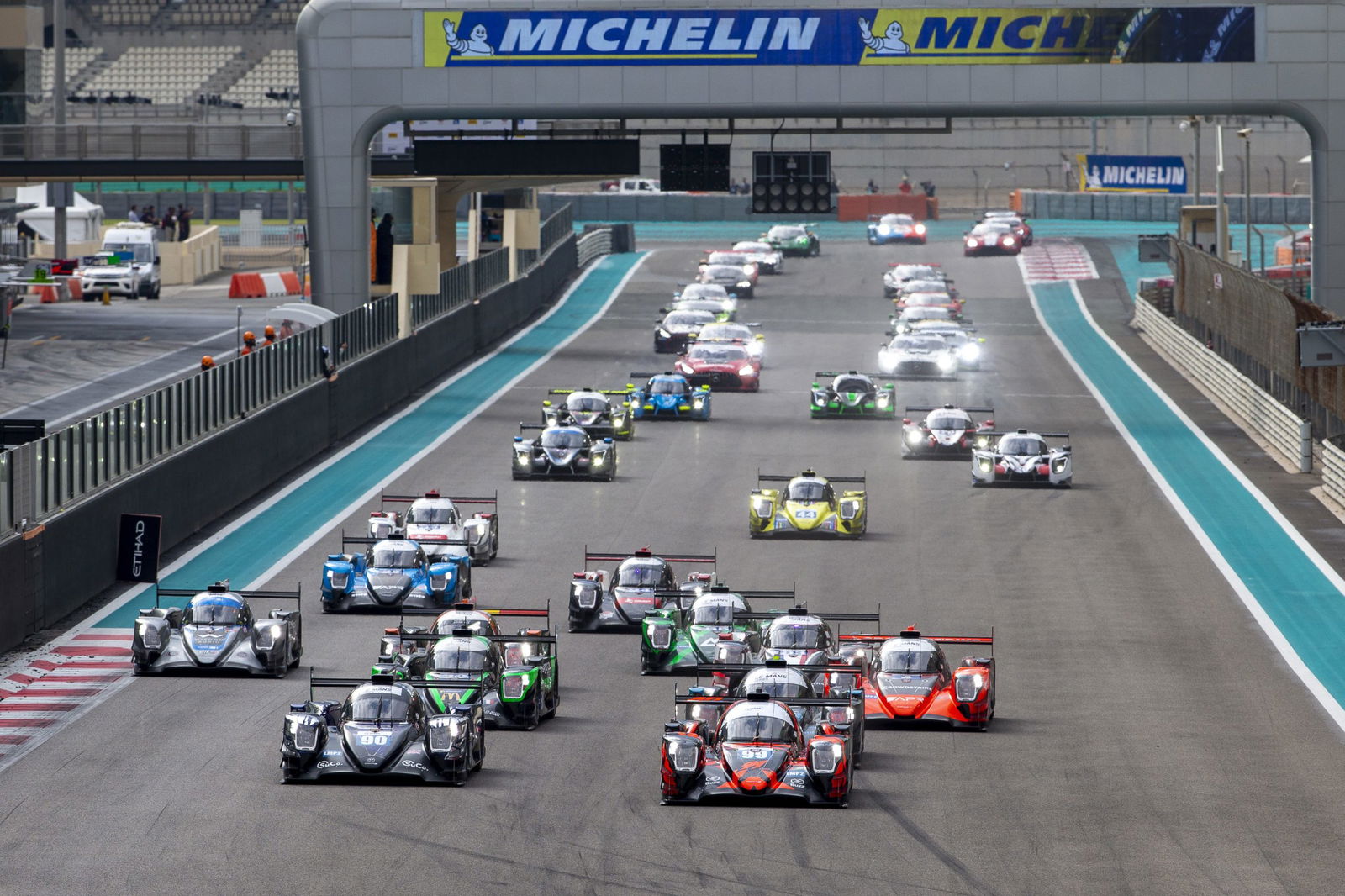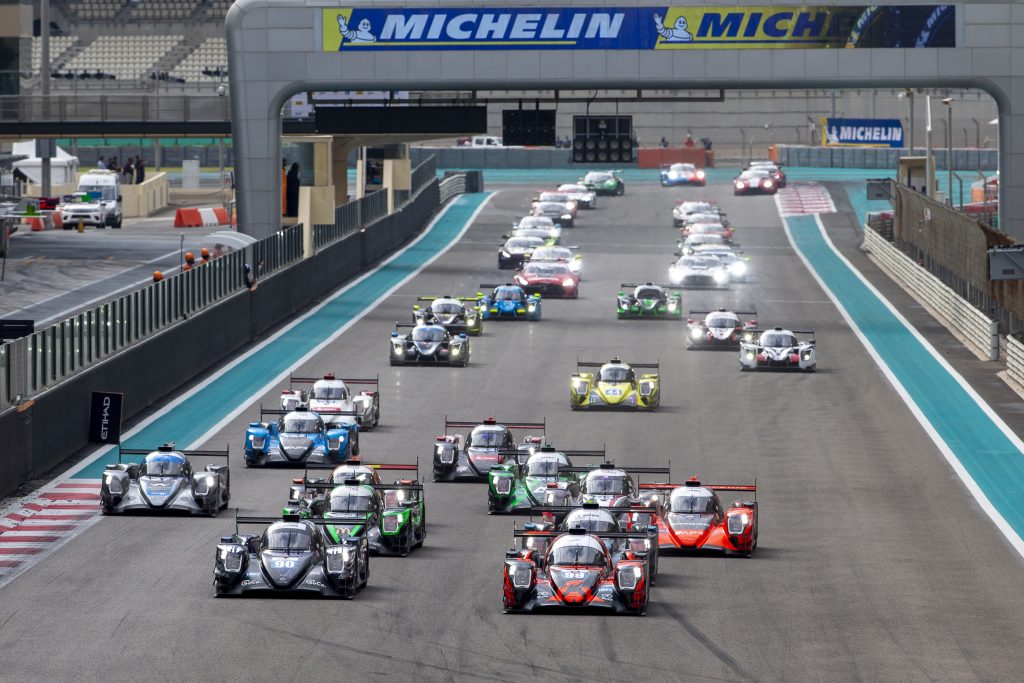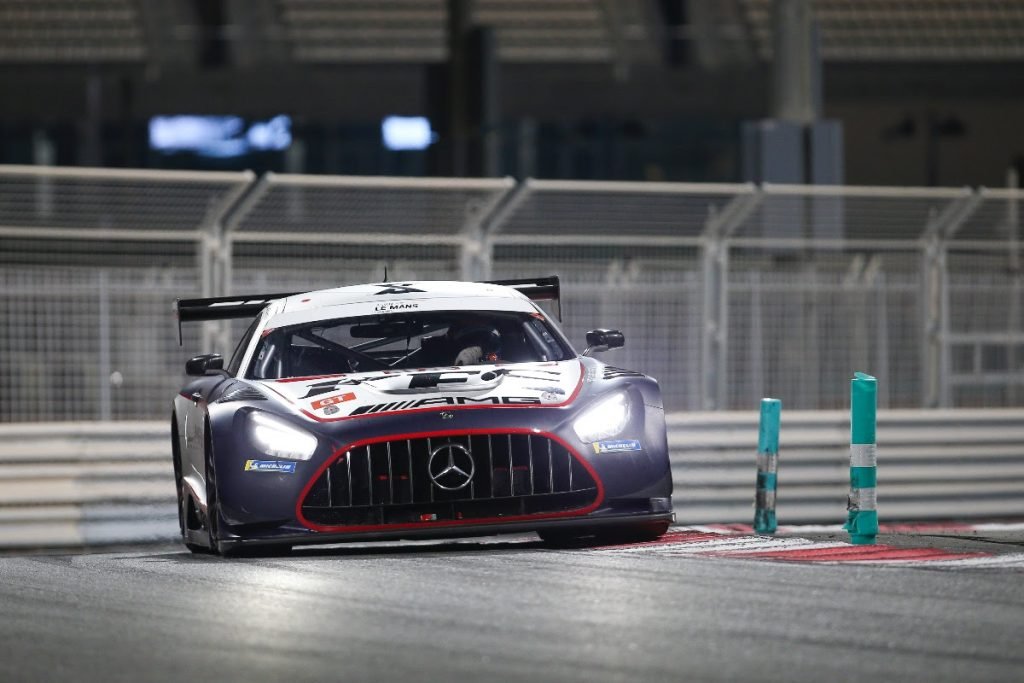

I write this as I await the flight back to Australia from Dubai and then, immediately, the trip to Bathurst for the 12 Hour. The Triple Eight/Johor Motor Racing GT team has just finished its first ever Asian Le Mans Series with a sensational double win at the Yas Marina F1 circuit in Abu Dhabi but now, just before I focus on preparation for my favourite race of the year at Mount Panorama, here’s a bit of an overview of what this means.
The ALMS is a five-race championship with two races at Sepang, Malaysia, in December followed by travelling to the UAE for one race at the Dubai Autodrome and then the final double-header at Yas Marina. T8/JMR missed the championship win by only two points whilst also being the only team to win more than one race.
Each race is a four-hour enduro with three drivers per car; one FIA Bronze, one Silver, and finally one Gold/Platinum. The winner of the championship gets an invitation to compete at this year’s Le Mans 24 Hour race, hence the huge interest in taking part. No less than 23 GT3 cars were entered in the GT category (with a further 18 in the LMP2 and ‘3 classes) from teams literally from across the world. That all made for a very busy paddock and pit lane.
With entries at Le Mans being as difficult to get as rocking horse manure, the level of competition is intense and the standards are high. An entry has a potential value (if the winner chooses to pass it on) of around $1 million Aussie.
For T8/JMR, ALMS represented the first exposure to running on Michelin tyres, rather than the Pirellis used across all SRO series, as well as a very different, and complex, rule book.
The biggest challenge of each race is staying on top of the complicated driving time rules that are designed to ensure that Bronze and Silver drivers get most of the wheel time. These are complicated further by a maximum stint time for everyone as well as automatic pit lane closure under Full Course Yellows and Safety Cars. In fact, it was the failure to observe the maximum stint time on the part of the Lamborghini entry on Sunday in the final race that led to their downfall and subsequent penalty. That gave T8/JMR the win.
Almost every entry, including the #88, had several pit lane drive-through penalties, for one reason or another, during the course of the five races. It really was a case of those who made least mistakes got the trophies as no one was perfect.
There are all sorts of other operational rules that differ from not only some SRO series but also Supercars. These range from a 60 km/h pit lane speed limit (rather than 40 in Australia) to never driving in and out of pit garages – only using skates to roll cars into and out of the lane.
Scrutineering is also massively stricter than anything that the team had encountered beforehand. For instance, a full height hoist is used as part of the car examination process post-race.

Like all category rule books, there are some points that I reckon Supercars does better and others that Supercars could learn from. One interesting rule is the onus is put upon each competitor to ensure that their fuel rig is set up to take a minimum of 40 seconds to fill the car. The rig ball valve is sealed before each race and then the podium cars are tested post-race as part of the scrutineering process. This rule removes the incentive to hot rod both the fuel rig and the car fill system.
Just as ALMS was a huge learning curve for the T8/JMR team in the garage, it also was for our Bronze driver, Prince Jefri. Apart from learning two new tracks, there was also the handling of being lapped by the LMP2 cars to consider. This is an integral part of multi-class sportscar racing and it’s something that will happen at Le Mans, so experiencing this was a vital part of His Highness’s preparation for the next steps in his career.
The Bronze drivers have to qualify their respective cars, rather than the Silvers or Gold/Platinums and that adds to the challenge. Prince Jefri qualified for all three Middle Eastern races in the top six which was no mean achievement amongst a high-quality and experienced field.
Meanwhile, young Jordan Love from WA did a great job having been recruited into the team once it as clear that Broc Feeney couldn’t dovetail Supercars testing commitments with this part of the ALMS season. Jordan is an exceptional talent and will hopefully have another great run with T8/JMR at Bathurst this coming weekend along with the Prince and the Supercars GOAT, JW.
Humming away in the background over all five races was the Tall, Lanky, Fast German, as Luca Stolz is known within the team. He is very fast, very consistent, and very easy to work with. A real Pro. He’ll be with the opposition at the 12 Hour (with Kenny H and Jules Gounon) but he remains a key part of the T8/JMR plans for the 2024 Asian GT series.
Returning to Yas Marina to race, 12 years since the last Supercars event there, was very special for me and several other team members who’d been there back then. The circuit was a very happy hunting ground for Triple Eight over the three times we raced V8s there. In fact, one of my very best motor racing moments was the one-two that we achieved in the first ever Supercars race there in 2010. It was made special as that was the first Holden race for T8.
So, to score two huge wins last weekend at the same venue all these years later at the climax of the first foray into the bullring that is ALMS was specially emotional, as well as being a massive credit to a relatively small, proudly multinational, team of Malaysians, Australians and Germans from a base in little old Brissie.
And now, onwards and upwards to the greatest track of all this coming weekend. Hope to see you all there.





















Discussion about this post